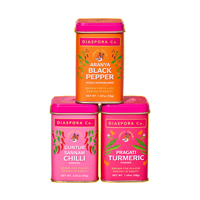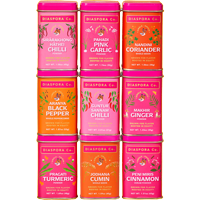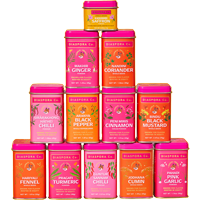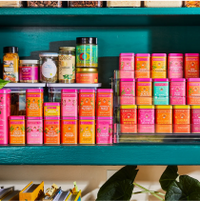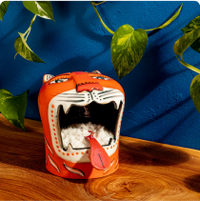Upon receiving your new kadipatta plant, follow these steps to help it acclimate and thrive in your climate:
- After unpacking your plant, water thoroughly until water streams out from the bottom.
- Transplant your plant into a 1-2 gallon pot with drainage holes. Avoid pots bigger than 2 gallons.
- Use well draining soil, ideally organic potting soil with additional perlite or pumice, or use cactus/succulent mix.
- When transplanting, make sure to avoid disturbing the roots. Try filling the new pot ⅓ up with soil, then carefully place your new plant into the pot and fill around the plant with soil.
- Water the new transplant in well.
- Leave your newly transplanted kadipatta out of direct sunlight for a few days to avoid shocking it after a long, dark journey.
🌞 Where to keep your plant:
If you live in Zones 9 or lower, it’s best to keep your kadipatta indoors except for during the hot summer months. Even in some areas of Zones 10+, it grows better indoors year round. Do not consider planting your curry leaf into the ground until it’s at least 2 years old and you live in a climate where the temperatures rarely dip below 50 degrees F.
Being a tropical plant, it thrives in heat and humidity. Try to mimic those conditions as best as possible. Place your plant in a South facing window or outside along a South facing wall. Avoid placing your plant next to a heat vent as this will burn your leaves. Mist your leaves once a week with a spray bottle.
Indoors, curry leaf trees can handle sun all day. Outside, curry leaf trees will appreciate some shade in the afternoon if temperatures usually exceed 90 degrees F.
🪴 When to fertilize:
Curry leaves grow rapidly once the weather warms. During the Spring and Summer, fertilize your plant every 2 weeks with either fish emulsion or another type of low strength fertilizer.
🌧️ How to water:
Only water when the top 1-2 inches of soil are dry. Overwatering is the biggest cause of stress on the tree. When watering, make sure to water thoroughly until water streams out of the bottom holes. Reduce watering even further in the winter. Mist the leaves once a week with a spray bottle; you do not need to mist leaves during the winter.
✂️ When to harvest:
Do not start harvesting the leaves until your plant is at least 6” tall (measuring from the top of soil). Harvest from the bottom and move your way up. Harvest the entire petiole at a time. Make sure to leave at least 1/3 of its foliage intact so the plant can continue to grow and photosynthesize.
🍃 Kadipatta lifecycle:
If you live in a cold area of North America, or you get harsh winters, your kadipatta is likely to go through a dormant period. You may even see yellowing or dropping of the leaves. Try not to overwater as this will produce more stress. The best thing you can do is to leave it alone until spring, and it will hopefully start to revive then.
Usually kadipatta will put on new growth in spring and summer, which is a great time to fertilize and transplant, if your plant has outgrown its container.
![]()
Get access to detailed care instructions and ask all your questions via the kadipatta care community on the Diaspora Collective, our Discord server!






